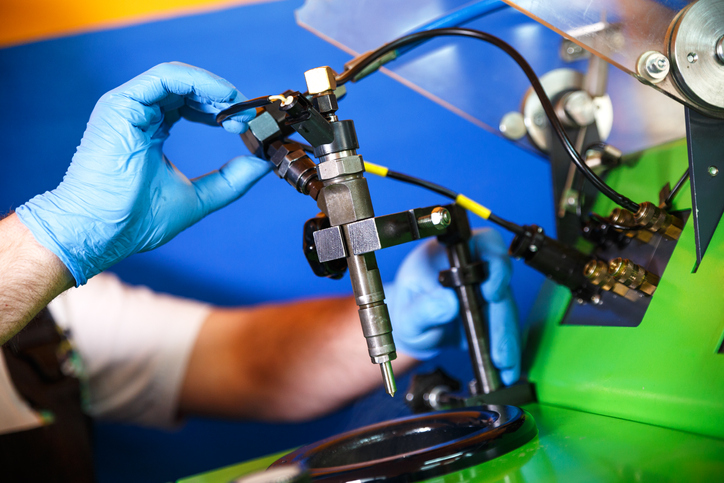Fuel Injection Systems Explained for Those in Auto Mechanic School

A fuel injection system is what helps a car’s engine run properly. To do this, there needs to be the correct quantities of both air and fuel. Essentially, it does its job by injecting fuel toward the combustion chambers of a vehicle’s engine at the right time.
Most cars nowadays have these types of systems in place to do this job more efficiently than carburettors could in years past. But how do they function, and what do auto mechanics need to know in order to best diagnose injector issues when they come up?
Here’s a rundown of how fuel injection systems work.
The Different Components of a Fuel Injection System
Before diving into how fuel injection systems work, it’s worth going over the components of these systems. A fuel injection system includes various parts, including four injectors, an inlet manifold, a fuel distributor, a fuel pump, a fuel accumulator, and a cold-start injector.
Any injectors found in the system are typically one of two different types: timed injection, which distributes fuel in intermittent bursts, or continuous injection, where fuel is continuously delivered into the inlet port.
There are also usually two types of fuel injectors: electronic and mechanical. In particular, an electronic injector sees an electromagnet open the valve when energized, which allows fuel to exit while under pressure.

What Automotive School Students Should Know About How Fuel Injection Systems Work
Auto mechanic school students should know that with most vehicles, fuel is delivered to the engine bay via a fuel pump before being injected into the inlet port or manifold. Meanwhile, a carburettor is often responsible for dictating the mixture of fuel and air.
While the fuel is injected, it gets delivered to every cylinder. Fuel and air then mix with each other through either the port or manifold before reaching the combustion chamber. Most cars that are powered by gasoline are injected with fuel indirectly in order to have an appropriate mixture of air and fuel prior to entering the combustion chamber. However, diesel-fueled cars typically use direct injection.

How Fuel Injection System Issues Arise, and How to Diagnose and Fix Them
Anyone hoping to have a mechanic career after automotive school should be able to troubleshoot issues with various components of a car, and a fuel injection system is no exception.
However, repairing a fuel injector isn’t particularly easy. Your best bet is to empty out any debris within the system or to replace the filter. More often than not, it is the fuel quality that can cause more issues than the actual injection system. This is particularly the case if the fuel filter isn’t clean, or if the fuel quality itself is poor.
That said, there are several signs that the injector is not functioning properly. These include leaking, misfiring, uneven or rough idling, the absence of a ticking noise, early detonation, fuel not atomizing correctly, and slow acceleration.
Want to start your auto mechanic training?
Contact Automotive Training Centres to learn more!

